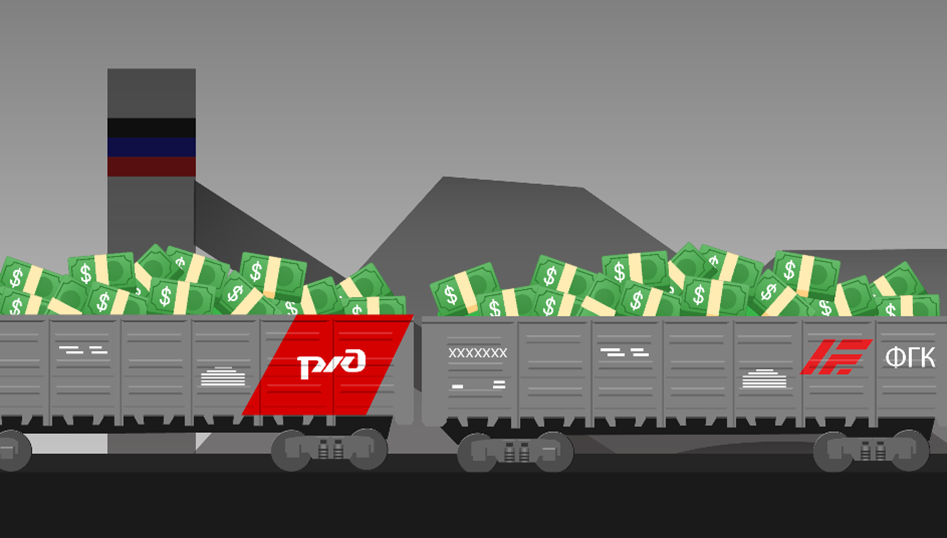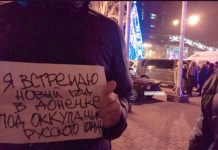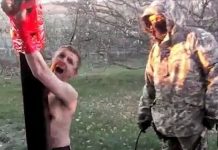Russian companies continue the systematic plunder of Ukraine’s natural resources at an industrial scale in separatist-held Donbas, while the area remains blockaded from trade with the rest of Ukraine. Using open-source evidence, the DFRLab corroborated the findings of a series of anonymous investigative articles published on the online journalism outlet Inforpost that revealed cargo wagons likely transporting natural resources across the Russian-Ukrainian border.
The Donbas region of eastern Ukraine is known for its vast natural resources and industrial infrastructure. The landscape is saturated with slag heaps and mine shafts from the excavation of resources like dolomite, limestone, and various forms of coal. In 2017, separatist forces took over a large number of Ukrainian businesses along with the broader economic infrastructure in the occupied region. Under their control, the local infrastructure and economy have wasted away, as mines shutter, railroads fall into disrepair, and workers are denied pay but rarely strike for fear of crackdowns from the separatist security services.
On February 4, 2020, Denis Pushilin, head of the Russian-backed separatists in the so-called “Donetsk People’s Republic” (“DNR”), commented on the longstanding issue of wages not being paid to miners by blaming “external factors.” Prior to joining the ranks of Russian-backed separatists, Pushilin was known for his involvement with a pyramid scheme, MMM. Simultaneously, unverified reports emerged that miners in Makiivka and Ilovaisk have begun striking despite pressure from the local security apparatus.
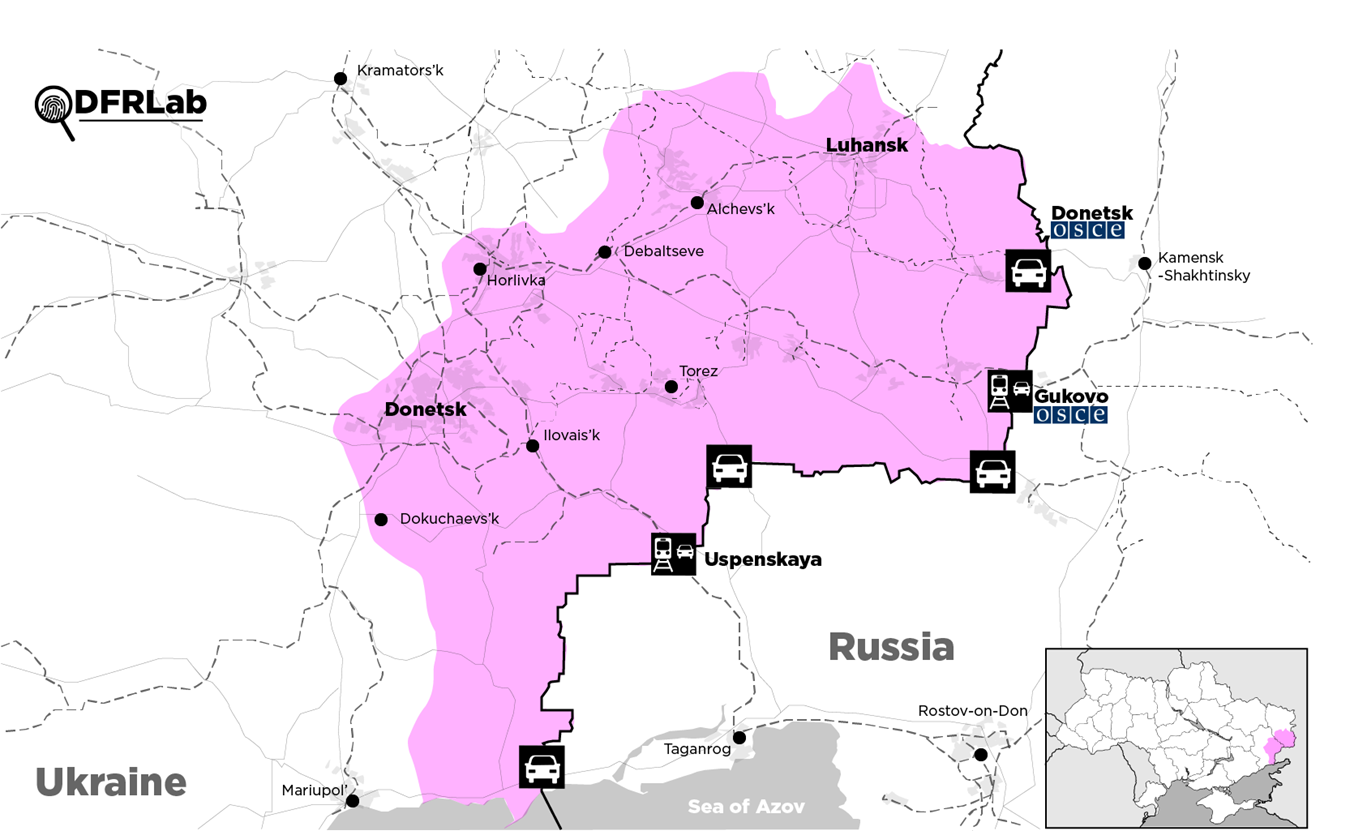
Blockade on occupied territories
The takeover of the local economy by separatist forces happened after the Ukrainian government’s institution of “import restrictions” on occupied territories, which amounted to an effective blockade. The blockade was formally instituted after then-deputy of the Ukrainian Parliament and former Donbas Battalion commander Semen Semenchenko made a unilateral decision to stop rail traffic between government and separatist-held territories.
Currently, the Organization for Security and Co-operation in Europe Special Monitoring Mission (OSCE SMM) to Ukraine only monitors two border crossings between Russia and separatist-held Ukraine: Gukovo, one of two train stations connected directly to separatist-held Ukraine, and a second near the Russian town of Donetsk, not to be mistaken for the separatist-held regional capital of the same name.
Because of the SMM’s position near but not in Gukovo, observers are unable to see trains passing through the border but can hear them. Between August 13 and September 19, 2019, SMM observers heard 143 trains transit between Russia and Ukraine. The majority of trains were heard exiting Ukraine, which may suggest a large number were entering through Uspenskaya station, at a crossing not monitored by OSCE SMM observers.
The evidence
In a series of videos and still shots, the anonymous author of the Inforpost investigation documented a number of freight trains with cars marked as belonging to the Russian Railroads (РЖД) and the Federal Cargo Company (ФГК) at various points throughout separatist-held Ukraine.
The DFRLab identified imagery of some of these freight cars in the Russian Federation at different points in time, showing that cargo continued to move between Russia and Ukraine after the imposition of the blockade.

Not only did the numbers on the individual wagons match, but markings and blemishes on the wagon cars were consistent as well. An image of a particular rail car captured by an anonymous Twitter user with the handle @UA_horlivka was geolocated to Bairak station, a minor rail hub located on the eastern outskirts of Horlivka in separatist-held Ukraine. The photographer was standing far on the eastern side of the station, north of the tracks and looking over a tram line onto the station.

The DFRLab created a gif to highlight that this is in fact the same train car. Note how even features like rust marks are identical and remain unchanged from one image to another.

About half a year prior to this image appearing, the same rail car was spotted in Russia, moving away from the Ukrainian border. The exact location was at a spot near the town of Merzhanovo, between Taganrog and Rostov-on-Don. This was easily verifiable due to the positioning of the camera, which captured a kilometer-marker in the frame. The marker in the video read “1298,” which placed the location to be between the 1295 and 1300 kilometer markers depicted on openrailwaymap.org.

In another image by the same anonymous Twitter user, a second rail car from the train spotted in Russia is shown inside separatist-held Ukraine in August 2019. This time, the author of the tweet identified the location as the Krynychna station near the Donetsk suburb of Makiivka, just east of the giant rail hub and conflict hotspot of Yasynuvata. This could be easily verified by looking at the station’s main building in one of the images, which clearly indicated “Криничная” (Krynychna) partially obscured by the black, blue, and red banner of the “DNR.”
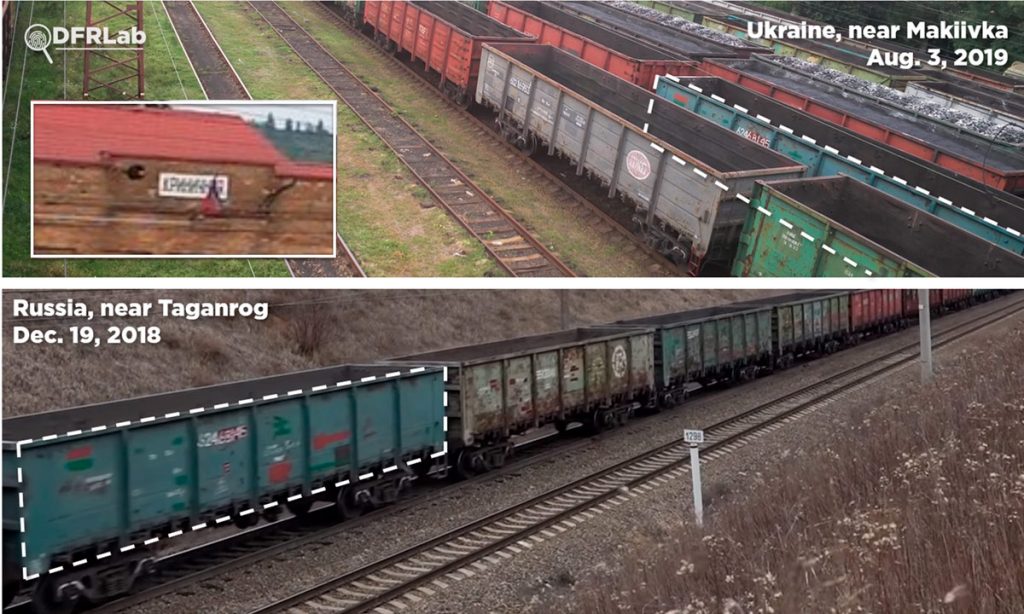
It is not clear whether the imagery from July 25 and August 3 were of the same train, although they likely were, given how they were both posted within a relatively short time of each other. It was clear, however, that the complete train spotted in Russia only contained some of the individual train cars spotted in Ukraine. Nonetheless, the open-source imagery provided visual confirmation of the illicit transit of cargo between Russia and separatist-held Ukraine.
Torezanthracite
The majority of the cargo moved in these types of rail cars is one of two materials: anthracite, a type of coal, and steel wire, which is produced in the metallurgy plants in Donetsk. Anthracite is a highly pure material with a high carbon content and thus burns with little smoke. It is still used in power plants and domestic heating today, while its higher grade forms are used for smelting.
In one of the Inforpost articles, the author showed how train cars carrying anthracite are processed in Russian rail management systems. Torezanthracite (in Russian: “Торезантрацит”), is a collection of anthracite mines near the separatist-controlled town of Torez. According to the article, train cars entering separatist-held areas in Ukraine are registered as being stopped at the border station of Uspenskaya (see above map).
Several commercial cargo tracking sites list the train cars present at a given train station, allowing stakeholders to monitor the movement of cargo. By perusing these sites, Inforpost reported that approximately 5,000 train cars were shown as stopped at Uspenskaya station in a single instant, even though on paper (and in actuality) Uspenskaya can only hold up to 36 trains.
The DFRLab obtained a list of train cars stopped at Uspenskaya station in July 2019 from one of the tracking sites. Many of these train cars matched with those recorded for the Inforpost articles that same month. The DFRLab also recognized one of these train cars in an open-source video shot at the Torezanthracite mine called “Progress.”
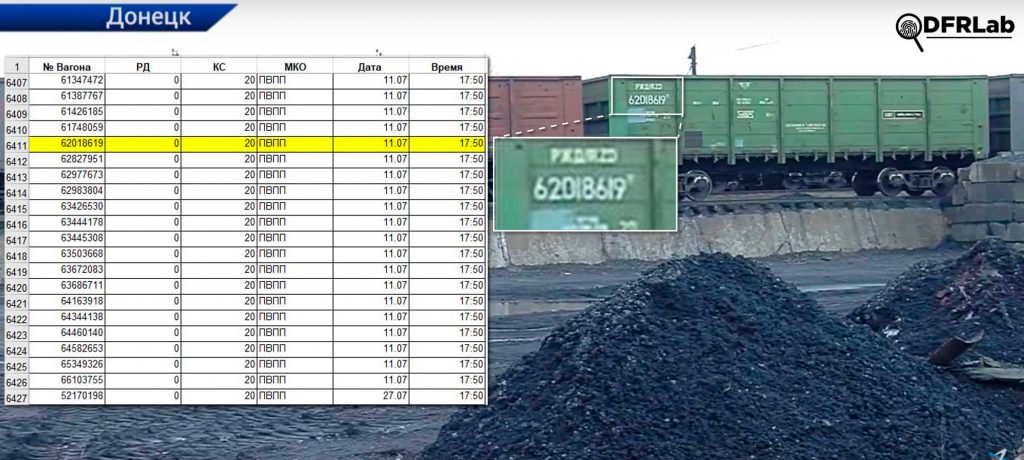
This footage, however, was shot in March 2019, and thus the train had likely already made at least one return trip to Russia by the time it was recorded at Uspenskaya again. Most train cars recorded at this specific mine were marked as belonging to the Russian Railroads or Federal Cargo Company. The wagon in the above image, for example, was marked РЖД — Russian Railroads.
All of these coal shipments from the Donbas region to Russia are carried out by a single company, Center for Efficient Logistics Solutions (CELR). Inforpost’s investigation linked this company to Sergey Kurchenko, a Ukrainian oligarch residing in Russia who now owns large parts of industry in occupied Donbas under the umbrella of a company called Vneshtorgservis.
Miners at Torezanthracite, like miners across separatist-held Donbas (and Ukraine at large, until recently), live in poverty due to being denied wages.
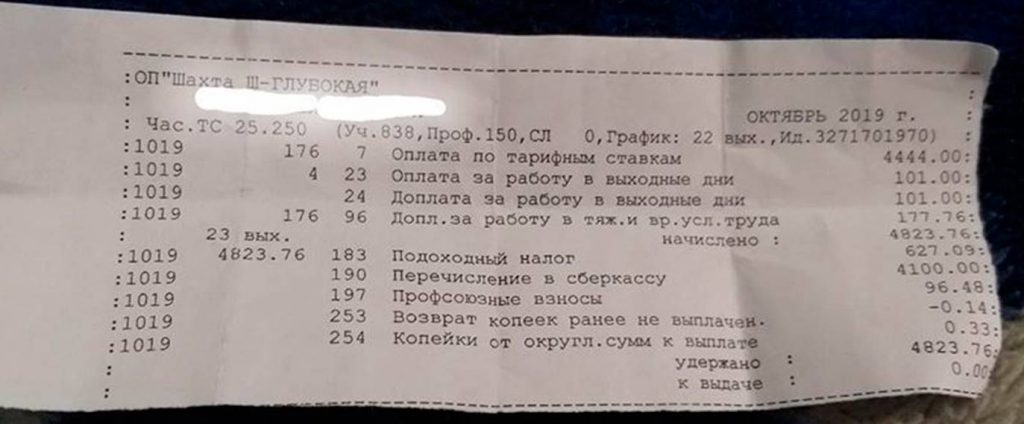
One anonymous post on Facebook from November 19 presented what appeared to be a pay stub issued by the Torezanthracite mine Shakhtyorskaya-Glubokaya for the month of October. The stub showed a payment of presumably just under ₽ 5,000 RUB, as no currency was indicated, which would equate to just under a hundred U.S. dollars. The minimum wage in Ukraine is ₴ 4,173 UAH a month, or about $171 USD. The DFRLab was unable to verify the pay stub, but claims like these are widespread across Donbas miner groups both on Facebook and VKontakte and go virtually uncontested.
Since “DNR” forces control of Torezanthracite, it is technically under the purview of “DNR head” Pushilin and his “Minister of Coal and Energy” to see to it that the miners receive their pay. Despite repeated pleas, wages are still not paid in full. In government-controlled Ukraine, miners could strike in protest, as they did recently to positive effect, but in the “DNR,” locals fear crackdowns from separatist security forces — in particular the MGB (Ministry of State Security). In 2018, reports came out of an MGB crackdown in the neighboring so-called “Luhansk People’s Republic” (“LNR”) against miners organizing strike. Now, anonymous reports of similar crackdowns are coming out of Donetsk, although they have yet to be verified.
The buyers of this coal include Russian, European, and, reportedly, Ukrainian companies, once the origin of the coal has been sufficiently obscured.
Conclusion
Russian-backed separatist forces in eastern Ukraine have created conditions that allow Russian companies to extract the region’s vast natural resources at a discount, at the detriment of local workers and their families. Due to the totalitarian nature of the separatist power structures, they receive little pushback.
In addition to the human toll, Ukraine’s national economy also suffers from this exploitation scheme, as exports from this region could serve as a significant source of tax revenue for the country. While there are many actors complicit in this scheme, special attention should be paid to CELR, the logistics company in charge of moving all this coal, and the Russian railways, which help mask the transit of train cars between Russia and occupied Ukraine.
Michael Sheldon is a Research Assistant with the Digital Forensic Research Lab and is based in Ukraine.
Follow along for more in-depth analysis from our #DigitalSherlocks.


